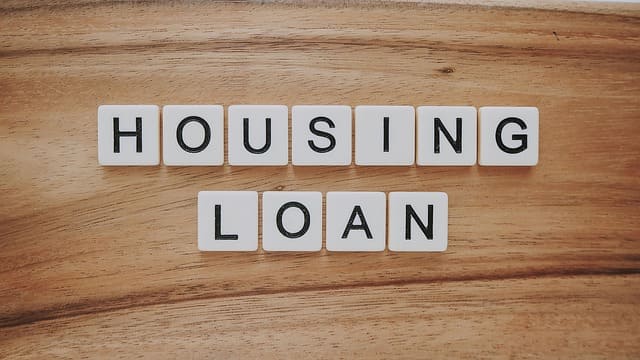Current Home Loan Interest Rates in India: What Borrowers Need to Know in 2025

Homeownership continues to be a major goal for many Indians, but the cost of borrowing plays a big part in that journey. With fluctuating economic conditions and changing RBI policies, staying up to date on the current Home Loan interest rates is essential for anyone planning to take a Home Loan this year.
The year 2025 brings both opportunities and challenges for borrowers. Interest rates are still relatively high compared to pre-pandemic levels, but certain trends indicate a shift. Whether you’re buying your first home or refinancing an existing Home Loan, knowing what’s happening in the market could save you a good amount in the long run.
Where Do Interest Rates Stand in May 2025?
As of May 2025, most home Loan interest rates in India fall between 7.85% and 8.75% per annum. This range varies based on several factors, including the type of lender (public or private), your credit profile, and the loan amount.
- Public sector banks, such as Union Bank of India and Central Bank of India, are offering rates starting from 85% for borrowers with credit scores of 800 or above.
- In some cases, these rates could even drop to 6.6%, depending on future adjustments to the RBI’s repo rate.
- Private banks like ICICI Bank and HDFC Bank generally start at the higher end of the spectrum, with base rates typically hovering around 75% or more, even for top-tier borrowers.
The differences reflect how each bank evaluates risk and structures its loan products. It also highlights the importance of comparing lenders carefully before you apply.
Why Are Home Loan Interest Rates Still High?
While the RBI has made cautious moves to keep inflation in check, interest rates remain higher than what many borrowers were used to a few years ago. Some key reasons include:
- Global inflationary pressures that affect the cost of capital
- Cautious monetary policy by the Reserve Bank of India to control liquidity
- Risk-based pricing, where banks offer lower rates only to borrowers with strong repayment histories
Until there is a major cut in the RBI’s repo rate, borrowers can expect interest rates to stay around the current range.
What Role Does Credit Score Play?
Your credit score has a direct impact on the current Home Loan interest rates offered to you. A score of 800 or more places you in the preferred category for most lenders, making you eligible for better rates, faster approval, and in some cases, additional perks like lower processing fees.
On the other hand, if your score is below 700, banks may:
- Offer you a higher interest rate (often above 9%)
- Ask for a larger down payment
- Reject your application if the risk is deemed too high
Improving your credit score before applying for a Home Loan can potentially save you lakhs over the life of your loan.
What Makes Public Sector Banks Competitive?
Public sector lenders are currently in a better position to offer lower interest rates because:
- They often work on broader government-backed financial inclusion goals
- They have relatively lower cost structures in terms of profit expectations
- Their interest rate spread is narrower, favouring borrowers with strong credit profiles
Banks like Union Bank of India, Canara Bank, and Central Bank of India are attracting high-credit-score borrowers with starting rates of 7.85%, and further reductions may follow if there is a repo rate cut.
These banks are especially appealing to salaried individuals, government employees, and those applying for loans under PMAY or other affordable housing schemes.
Where Do Private Lenders Stand?
Private sector banks tend to price their Home Loan products higher. Even for high-score applicants, base rates from lenders like ICICI Bank and HDFC Bank often begin at 8.75%. However, private banks provide:
- Faster application processes
- Better online portals and digital experience
- More flexible repayment options
- Tailored services for self-employed and high-net-worth individuals
This makes them a preferred choice for urban professionals and business owners who value convenience and are willing to pay a slightly higher rate for better service.
What About NBFCs and HFCs?
Non-Banking Financial Companies (NBFCs) and Housing Finance Companies (HFCs) are also active players in the Home Loan space. While they generally charge higher interest rates compared to banks, they serve a wider range of borrowers, including those with:
- Irregular income
- Limited credit history
- Informal employment
Among them, L&T Home Finance stands out as a reliable and competitive option. Known for customer-focused services, transparent documentation, and reasonably priced loan schemes, L&T Home Finance offers Home Loans with flexible tenure and repayment plans.
They are a solid choice for first-time homebuyers and those looking for a quick loan disbursal without too much red tape.
Should You Wait for Rates to Drop?
Many borrowers are wondering if they should postpone taking a Home Loan in hopes of lower interest rates. While it’s true that rates may fall if the RBI cuts the repo rate in the coming months, there’s no guarantee. Waiting could also mean:
- Losing out on a good property deal
- Facing higher property prices later due to rising demand
- Missing benefits like tax savings under Sections 24 and 80C
A smarter strategy is to:
- Lock in a Home Loan at the best available fixed or floating rate
- Opt for lenders that offer balance transfer options
- Monitor RBI updates regularly and refinance if rates fall significantly
How to Get the Best Home Loan Rate Right Now
If you’re planning to apply for a Home Loan in 2025, here are a few tips to secure the lowest rate possible:
- Maintain a credit score above 750
- Choose shorter tenures, which often attract lower rates
- Negotiate with the lender, especially if you have an existing relationship
- Consider public sector lenders for competitive rates
- Compare prepayment penalties and processing fees, not just interest rates
- Evaluate options like L&T Home Finance for transparent lending terms and tailored loan solutions
By following these practices, you improve your chances of getting a favourable deal that suits your budget and long-term financial goals.
Final Thoughts
The current Home Loan interest rates in India in May 2025 offer a mix of opportunity and caution. With rates ranging between 7.85% and 8.75%—and potentially lower for high-credit-score borrowers—it’s a good time to review your finances, track offers from various lenders, and take a well-informed decision.
From public sector lenders offering competitive rates to trusted players like L&T Home Finance, there are plenty of options for borrowers. Whether you’re buying your first home or looking to refinance, keep an eye on rate trends, credit score improvements, and repayment flexibility to make your Home Loan work better for you.
If the repo rate drops in the months ahead, early borrowers with floating rates could also benefit. Until then, being prepared, comparing offers, and borrowing wisely are your best tools.

Pranab Bhandari is an Editor of the Financial Blog “Financebuzz”. Apart from writing informative financial articles for his blog, he is a regular contributor to many national and international publications namely Tweak Your Biz, Growth Rocks ETC.






